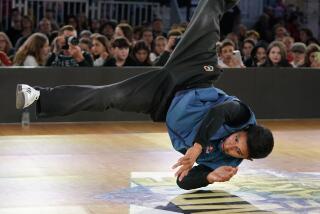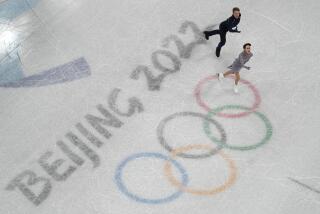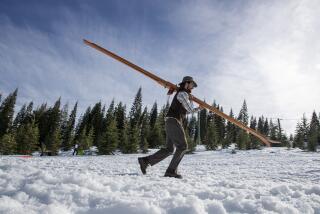Short-Track Speedskating Takes Long Route Back to Medal Sport
- Share via
ALBERTVILLE, France — Short-track speedskating, also known as North American Rules, will be an official medal sport for the first time in the Winter Olympics.
But, in fact, it was tried once before, at Lake Placid, N.Y., in 1932, when organizers staged the speedskating competition with short track rules, which require from four to six competitors to race against each other.
In the more universally accepted form of speedskating, which has been a medal sport since the first Winter Games in 1924, two competitors, skating in separate lanes, race against the clock.
Although short-track speedskating is more entertaining for spectators, the reasons for postponing its acceptance as a medal sport are understandable considering the experiment’s woeful results in 1932.
Angered by the rule changes, Finland’s Clas Thunberg, a five-time gold medalist, withdrew. The world record-holder, he was the favorite in the 500 meters. Without Thunberg in the race, John Shea, who was from Lake Placid, won the event only two hours after delivering the athletes’ oath in the opening ceremony.
Shea also won the 1,500, an event that was marred when judges ordered a restart in the middle of the second heat. They ruled that the skaters had been loafing.
Sixty years later, short track returns as an official sport with men competing in the 1,000 meters and 5,000-meter relay, and women in the 500 meters and 3,000-meter relay. Athletes from Australia, New Zealand and South Korea, countries not normally associated with success in the Winter Games, are medal contenders.
More to Read
Go beyond the scoreboard
Get the latest on L.A.'s teams in the daily Sports Report newsletter.
You may occasionally receive promotional content from the Los Angeles Times.






